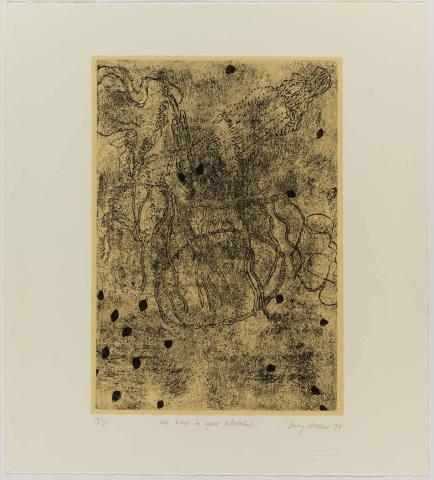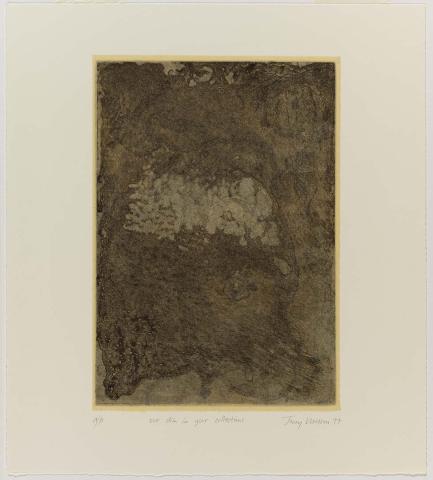Judy Watson’s ‘our bones in your collection’
By Bruce Johnson McLean
‘I, Object’ August 2019
Watson visited the collections of the Horniman Museum and the British Museum, both in London in 1996, while researching the heritage of her grandmother's people, the Waanyi of north-west Queensland. The visit raised questions for the artist as to how the cultural material in these museums was acquired. This series references the turmoil that confronts Indigenous people when they consider museum collections of Indigenous human remains.
In her study of the objects, Watson wondered if those twined with human hair might include some of her own great grandmother's hair, as she was aware of trade between different language groups living in close proximity to one another. The relics that are etched in these prints come from the Gulf of Carpentaria, near to the artist's ancestral country. They are based on the drawings of a pituri bag (used for the storing of native tobacco), an armband and a fringe.
She explains:
My work talks about concealed histories that concern Aboriginal people. To me it becomes more personalised when talking about things that have happened up in northwest Queensland in my grandmother's country.
Though Watson's symbolism in this series is not blatant, the message she conveys is very clear, as the titles of these prints refer to the macabre ethnocentric practice of collecting and keeping human remains, in Western anthropology.
Connected objects
Metadata, copyright and sharing information
About this story
- Subject


